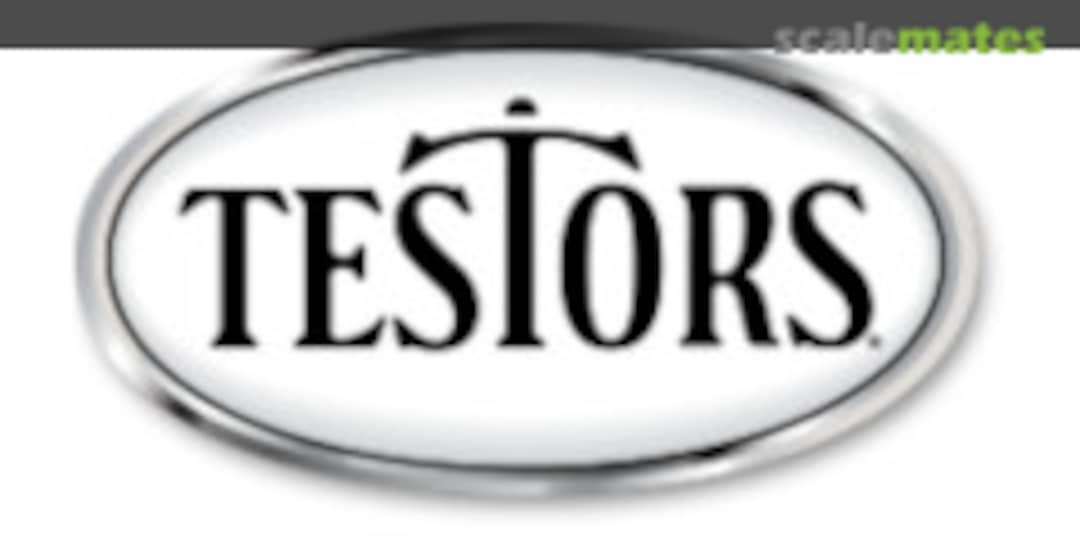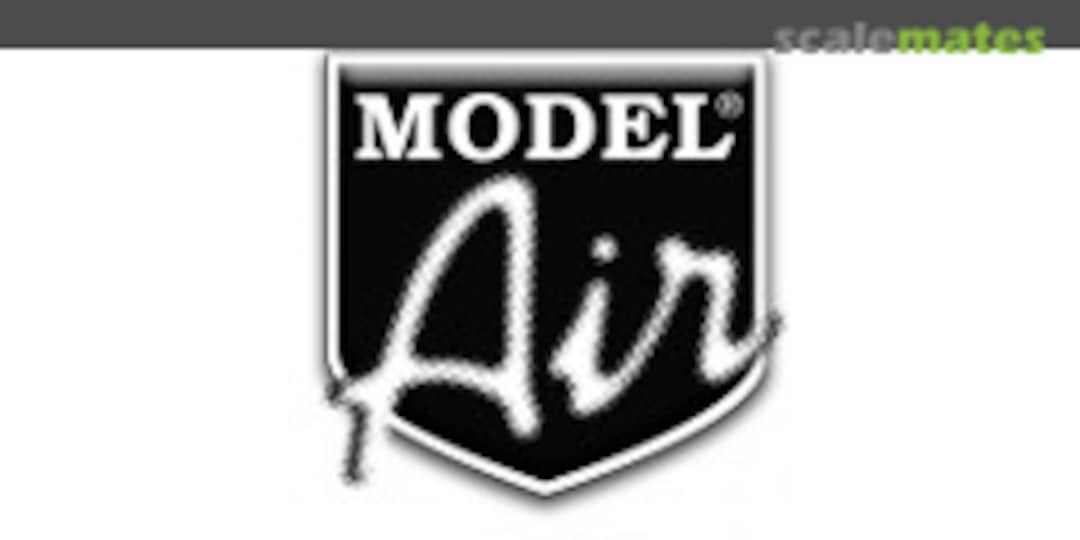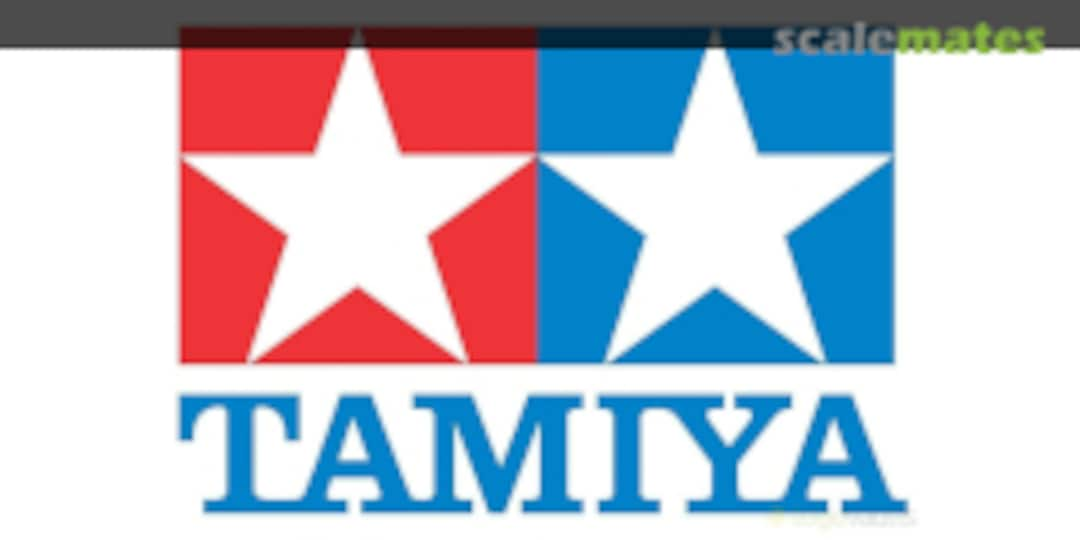Rudolf Hess
- Scale:
- 1:144
- Status:
- Completed
- Started:
- March 23, 2019
- Completed:
- April 6, 2019
Bf 110 painted in the scheme of Rudolf Hess ca. May 1941.
Using Vallejo Model Air acrylic and Testors flat enamel (wheels).
Attempted peace mission:
As the war progressed, Hitler's attention became focused on foreign affairs and the conduct of the war. Hess, who was not directly engaged in these endeavours, became increasingly sidelined from the affairs of the nation and from Hitler's attention; Bormann had successfully supplanted Hess in many of his duties and usurped his position at Hitler's side. Also concerned that Germany would face a war on two fronts as plans progressed for Operation Barbarossa, the invasion of the Soviet Union scheduled to take place in 1941, Hess decided to attempt to bring Britain to the negotiating table by travelling there himself to seek meetings with the British government.[61][62][63] He asked the advice of Albrecht Haushofer, who suggested several potential contacts in Britain. Hess settled on fellow aviator Douglas Douglas-Hamilton, the Duke of Hamilton, whom he had never met. On Hess's instructions, Haushofer wrote to Hamilton in September 1940, but the letter was intercepted by MI5 and Hamilton did not see it until March 1941. Hamilton was chosen in the mistaken belief that he was one of the leaders of an opposition party opposed to war with Germany, and because he was a friend of Haushofer.[64][65][66]
A letter Hess wrote to his wife dated 4 November 1940 shows that in spite of not receiving a reply from Hamilton, he intended to proceed with his plan. He began training on the Messerschmitt Bf 110, a two-seater twin-engine aircraft, in October 1940 under instructor Wilhelm Stör, the chief test pilot at Messerschmitt. He continued to practise, including logging many cross-country flights, and found a specific aircraft that handled well—a Bf 110E-1/N—which was from then on held in reserve for his personal use. He asked for a radio compass, modifications to the oxygen delivery system, and large long-range fuel tanks to be installed on this plane, and these requests were granted by March 1941.[67]
Flight to Scotland
After a final check of the weather reports for Germany and the North Sea, Hess took off at 17:45 on 10 May 1941 from the airfield at Augsburg-Haunstetten in his specially prepared aircraft.[68] It was the last of several attempts to depart on his mission; previous efforts had to be called off due to mechanical problems or poor weather.[69] Wearing a leather flying suit bearing the rank of captain, he brought along a supply of money and toiletries, a torch, a camera, maps and charts, and a collection of 28 different medicines, as well as dextrose tablets to help ward off fatigue and an assortment of homoeopathic remedies.[61][70][71]
Initially setting a course towards Bonn, Hess used landmarks on the ground to orient himself and make minor course corrections. When he reached the coast near the Frisian Islands, he turned and flew in an easterly direction for twenty minutes to stay out of range of British radar. He then took a heading of 335 degrees for the trip across the North Sea, initially at low altitude, but travelling for most of the journey at 5,000 feet (1,500 m). At 20:58 he changed his heading to 245 degrees, intending to approach the coast of North East England near the town of Bamburgh, Northumberland. As it was not yet sunset when he initially approached the coast, Hess backtracked, zigzagging back and forth for 40 minutes until it grew dark. Around this time his auxiliary fuel tanks were exhausted, so he released them into the sea. Also around this time, at 22:08, the British Chain Home station at Ottercops Moss near Newcastle upon Tyne detected his presence and passed along this information to the Filter Room at Bentley Priory. Soon he had been detected by several other stations, and the aircraft was designated as "Raid 42".[72]
Two Spitfires of No. 72 Squadron RAF, No. 13 Group RAF that were already in the air were sent to attempt an interception, but failed to find the intruder. A third Spitfire sent from Acklington at 22:20 also failed to spot the aircraft; by then it was dark and Hess had dropped to an extremely low altitude, so low that the volunteer on duty at the Royal Observer Corps (ROC) station at Chatton was able to correctly identify it as a Bf 110, and reported its altitude as 50 feet (15 m). Tracked by additional ROC posts, Hess continued his flight into Scotland at high speed and low altitude, but was unable to spot his destination, Dungavel House, so he headed for the west coast to orient himself and then turned back inland. At 22:35 a Boulton Paul Defiant sent from No. 141 Squadron RAF based at Ayr began pursuit. Hess was nearly out of fuel, so he climbed to 6,000 feet (1,800 m) and parachuted out of the plane at 23:06. He injured his foot, either while exiting the aircraft or when he hit the ground. The aircraft crashed at 23:09, about 12 miles (19 km) west of Dungavel House.[73] He would have been closer to his destination had he not had trouble exiting the aircraft.[74] Hess considered this achievement to be the proudest moment of his life.[75]
Before his departure from Germany, Hess had given his adjutant, Karlheinz Pintsch, a letter addressed to Hitler that detailed his intentions to open peace negotiations with the British.[76] He planned to initially do so with the Duke of Hamilton, at his home, Dungavel House, believing (falsely) that the duke was willing to negotiate peace with the Nazis on terms that would be acceptable to Hitler.[77] Pintsch delivered the letter to Hitler at the Berghof around noon on 11 May.[76] After reading the letter, Hitler let loose an outcry heard throughout the entire Berghof and sent for a number of his inner circle, concerned that a putsch might be underway.[78]
Hitler worried that his allies, Italy and Japan, would perceive Hess's act as an attempt by Hitler to secretly open peace negotiations with the British. Hitler contacted Mussolini specifically to reassure him otherwise.[78] For this reason, Hitler ordered that the German press should characterise Hess as a madman who made the decision to fly to Scotland entirely on his own, without Hitler's knowledge or authority. Subsequent German newspaper reports described Hess as "deluded, deranged", indicating that his mental health had been affected by injuries sustained during World War I. Some members of the government, including Göring and Propaganda Minister Joseph Goebbels, believed this only made matters worse, because if Hess truly were mentally ill, he should not have been holding an important government position.[79]
Hitler stripped Hess of all of his party and state offices, and secretly ordered him shot on sight if he ever returned to Germany. He abolished the post of Deputy Führer, assigning Hess's former duties to Bormann, with the title of Head of the Party Chancellery.[79][80] Bormann used the opportunity afforded by Hess's departure to secure significant power for himself.[81] Meanwhile, Hitler initiated Aktion Hess, a flurry of hundreds of arrests of astrologers, faith healers and occultists that took place around 9 June. The campaign was part of a propaganda effort by Goebbels and others to denigrate Hess and to make scapegoats of occult practitioners.[82]
American journalist Hubert Renfro Knickerbocker, who had met both Hitler and Hess, speculated that Hitler had sent Hess to deliver a message informing Winston Churchill of the forthcoming invasion of the Soviet Union, and offering a negotiated peace or even an anti-Bolshevik partnership.[83] Soviet leader Joseph Stalin believed that Hess's flight had been engineered by the British. Stalin persisted in this belief as late as 1944, when he mentioned the matter to Churchill, who insisted that they had no advance knowledge of the flight.[84] While some sources reported that Hess had been on an official mission, Churchill later stated in his book The Grand Alliance that in his view, the mission had not been authorized. "He came to us of his own free will, and, though without authority, had something of the quality of an envoy", said Churchill, and referred to Hess's plan as one of "lunatic benevolence".[85]
After the war, Albert Speer discussed the rationale for the flight with Hess, who told him that "the idea had been inspired in him in a dream by supernatural forces. We will guarantee England her empire; in return she will give us a free hand in Europe."[86] While in Spandau prison, Hess told journalist Desmond Zwar that Germany could not win a war on two fronts. "I knew that there was only one way out – and that was certainly not to fight against England. Even though I did not get permission from the Fuhrer to fly I knew that what I had to say would have had his approval. Hitler had great respect for the English people ..."[87] Hess wrote that his flight to Scotland was intended to initiate "the fastest way to win the war".[88]
Capture
Hess landed at Floors Farm, Eaglesham, south of Glasgow, where he was discovered still struggling with his parachute by local ploughman David McLean. Identifying himself as "Hauptmann Alfred Horn", Hess said he had an important message for the Duke of Hamilton. McLean helped Hess to his nearby cottage and contacted the local Home Guard unit, who escorted the captive to their headquarters in Busby, East Renfrewshire. He was next taken to the police station at Giffnock, arriving after midnight; he was searched and his possessions confiscated. Hess repeatedly requested to meet with the Duke of Hamilton during questioning undertaken with the aid of an interpreter by Major Graham Donald, the area commandant of Royal Observer Corps. After the interview Hess was taken under guard to Maryhill Barracks in Glasgow, where his injuries were treated. By this time some of his captors suspected Hess's true identity, though he continued to insist his name was Horn.[89][90]
Hamilton had been on duty as wing commander at RAF Turnhouse near Edinburgh when Hess had arrived, and his station had been one of those that had tracked the progress of the flight. He arrived at Maryhill Barracks the next morning, and after examining Hess's effects, he met alone with the prisoner. Hess immediately admitted his true identity and outlined the reason for his flight. Hamilton told Hess that he hoped to continue the conversation with the aid of an interpreter; Hess could speak English well, but was having trouble understanding Hamilton.[91][92] He told Hamilton that he was on a "mission of humanity" and that Hitler "wished to stop the fighting" with England.[93]
After the meeting, Hamilton examined the remains of the Messerschmitt in the company of an intelligence officer, then returned to Turnhouse, where he made arrangements through the Foreign Office to meet Churchill, who was at Ditchley for the weekend. They had some preliminary talks that night, and Hamilton accompanied Churchill back to London the next day, where they both met with members of the War Cabinet. Churchill sent Hamilton with foreign affairs expert Ivone Kirkpatrick, who had met Hess previously, to positively identify the prisoner, who had been moved to Buchanan Castle overnight.[91][94] Hess, who had prepared extensive notes to use during this meeting, spoke to them at length about Hitler's expansionary plans and the need for Britain to let the Nazis have free rein in Europe, in exchange for Britain being allowed to keep its overseas possessions. Kirkpatrick held two more meetings with Hess over the course of the next few days, while Hamilton returned to his duties. In addition to being disappointed at the apparent failure of his mission, Hess began claiming that his medical treatment was inadequate and that there was a plot afoot to poison him.[95]
Hess's flight, but not his destination or fate, was first announced by Munich Radio in Germany on the evening of 12 May. On 13 May Hitler sent Foreign Minister Joachim von Ribbentrop to give the news in person to Mussolini, and the British press was permitted to release full information about events that same day. On 14 May Ilse Hess finally learned that her husband had survived the trip when news of his fate was broadcast on German radio.[96]
Two sections of the fuselage of the aircraft were initially hidden by David McLean and later retrieved. One part was sold to the former assistant secretary of the Battle of Britain Association, who gave it to a war museum in the US; this 17.5 by 23 inches (44 by 58 cm) part was later sold by Bonhams at auction.[97] Part of the fuel tank and a strut were offered for sale via Bonhams in 2014.[98] Other wreckage was salvaged by 63 Maintenance Unit between 11 and 16 May 1941 and then taken to Oxford to be stored. The aeroplane had been armed with four machine guns in the nose, but carried no ammunition.[99] One of the engines is on display at the RAF Museum while the Imperial War Museum displays another engine and part of the fuselage.[100]
References:
en.wikipedia.org/wik..s#Flight_to_Scotland
61. Evans 2008, p. 167.
62. Shirer 1960, p. 837.
63. Sereny 1996, p. 321.
64. Nesbit & van Acker 2011, pp. 29–30.
65. Shirer 1960, p. 836.
66. Manvell & Fraenkel 1971, p. 82.
67. Nesbit & van Acker 2011, pp. 32–37.
68. Nesbit & van Acker 2011, p. 44.
69. Manvell & Fraenkel 1971, p. 92.
70. Bird 1974, p. 15.
71. Nesbit & van Acker 2011, p. 39.
72. Nesbit & van Acker 2011, pp. 46–51.
73. Nesbit & van Acker 2011, pp. 52–58.
74. Manvell & Fraenkel 1971, p. 101.
75. Manvell & Fraenkel 1971, p. 97.
76. Evans 2008, p. 168.
77. Handwerk 2016.
78. Childers 2017, p. 478.
79. Shirer 1960, p. 838.
80. Evans 2008, p. 169.
81. Childers 2017, pp. 478–479.
82. Manvell & Fraenkel 1971, pp. 126–127, 131–132.
83. Knickerbocker 1941, p. 161.
84. Nesbit & van Acker 2011, pp. 107–108.
85. Churchill 1950, p. 55.
86. Speer 1971, p. 241.
87. Boyes 2010.
88. Zwar 2010, p. 127.
89. Manvell & Fraenkel 1971, pp. 101–105.
90. Nesbit & van Acker 2011, pp. 58–61.
91. Manvell & Fraenkel 1971, pp. 105–107.
92. Nesbit & van Acker 2011, pp. 61–63.
93. Shirer 1960, p. 835.
94. Nesbit & van Acker 2011, pp. 61–68.
95. Manvell & Fraenkel 1971, pp. 116–117, 124.
96. Manvell & Fraenkel 1971, pp. 119–120.
97. Bonhams 2014.
98. Bonhams 2015.
99. Nesbit & van Acker 2011, pp. 72–73.
100. The Scotsman 2014.
• Bird, Eugene (1974). The Loneliest Man in the World. London: Martin Secker & Warburg. OCLC 1094312.
• Boyes, Roger (7 June 2010). "How I got Hess talking: Australian journalist Desmond Zwar explains". The Australian. News Corp Australia. Retrieved 29 August 2018.
• Childers, Thomas (2017). The Third Reich: A History of Nazi Germany. New York: Simon & Schuster. ISBN 978-1-45165-113-3.
• Churchill, Winston (1950). The Grand Alliance: The Second World War. Boston; Cambridge: Houghton Mifflin.
• Evans, Richard J. (2005). The Third Reich in Power. New York: Penguin Group. ISBN 978-0-14-303790-3.
• Handwerk, Brian (10 May 2016). "Will We Ever Know Why Nazi Leader Rudolf Hess Flew to Scotland in the Middle of World War II?". Smithsonian Magazine. Smithsonian Institution. Retrieved 28 Sereny, Gitta (1996) [1995]. Albert Speer: His Battle With Truth. New York: Vintage. ISBN 978-0-679-76812-8.
• Knickerbocker, H. R. (1941). Is Tomorrow Hitler's? 200 Questions on the Battle of Mankind. New York: Reynal & Hitchcock.
• Manvell, Roger; Fraenkel, Heinrich (1971). Hess: A Biography. London: Granada. ISBN 0-261-63246-9.
• Nesbit, Roy Conyers; van Acker, Georges (2011) [1999]. The Flight of Rudolf Hess: Myths and Reality. Stroud: History Press. ISBN 978-0-7509-4757-2 August 2017.
• Shirer, William L. (1960). The Rise and Fall of the Third Reich. New York: Simon & Schuster. ISBN 978-0-671-62420-0.
• Speer, Albert (1971) [1969]. Inside the Third Reich. New York: Avon. ISBN 978-0-380-00071-5.
• Staff (21 October 2015). "Deputy Fuhrer Rudolf Walter Richard Hess: Sections of his Crashed Plane, Recovered From Floors Farm, Eagleston, Scotland, 11 May 1941". Bonhams. Retrieved 29 August 2018.
• Staff (31 May 2014). "Scottish field wreckage of Hess plane to be sold". The Scotsman. Edinburgh. Zwar, Desmond (16 June 2010). Talking to Rudolf Hess. Stroud: History Press. ISBN 978-0-7524-5522-8. Retrieved 29 August 2018.











